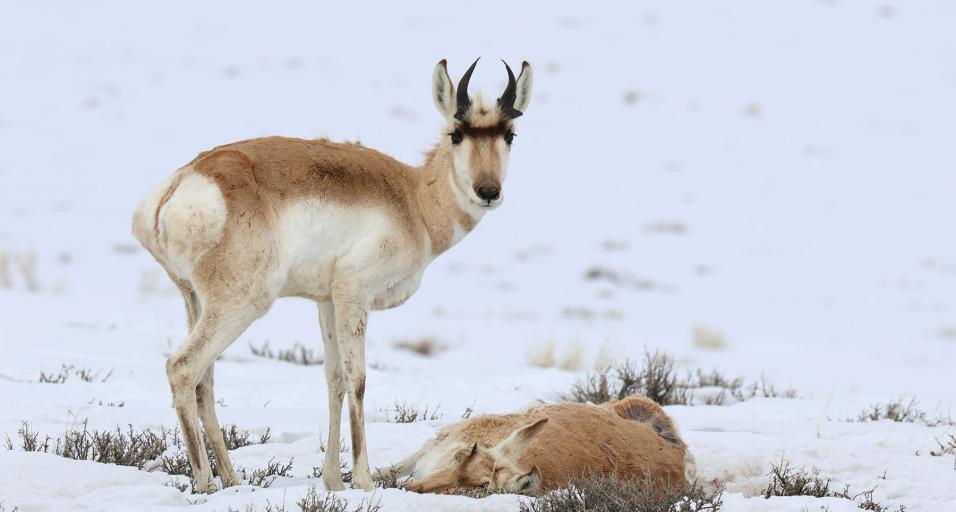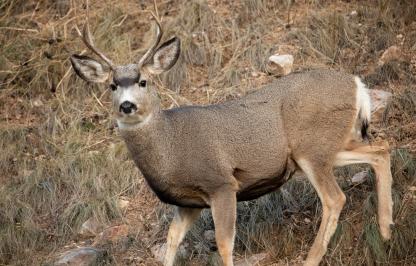The Wyoming Game and Fish Department has growing concern over the potential impact of this year’s severe winter on both pronghorn and mule deer in western Wyoming. Managers are also collaborating with the Wyoming State Veterinary Laboratory to investigate a rare disease outbreak in pronghorn south of Pinedale.
Since mid-February, between 250-300 pronghorn carcasses have been removed from the landscape by Game and Fish field personnel where accessible, with many additional carcasses likely going undetected under an above-average snowpack this winter. To date, it is estimated that over 500 pronghorn have died due to the illness.
The lab results have identified Mycoplasma bovis as the pathogen infecting the pronghorn with most of those animals ultimately dying of pneumonia. Mycoplasma bovis should not be confused with Mycobacterium bovis that causes tuberculosis in cattle. They are two unrelated bacteria that cause very different diseases. The source of the M. bovis infection in the pronghorn is unknown, but most of the pronghorn mortalities have been south of Pinedale with at least one carcass testing positive for M. bovis as far south as Rock Springs.
Game and Fish personnel performing field necropsies on the pronghorn carcasses are reporting a growing number of animals now showing signs of dying from malnutrition and the effects of a long, hard winter rather than specifically to M. bovis.
A bright red and shrunken lung is a sign of M. bovis infection and pneumonia.
Bone marrow that is gelatinous rather than solid, or waxy, is a sign of malnutrition.
One real-time measure of mortality can be derived from GPS-collared animals in the Sublette pronghorn herd south of Pinedale. When a GPS collar lies motionless, biologists receive a mortality notification via email. Of the 83 adult female pronghorn wearing GPS collars at the beginning of winter, approximately 50 percent of those animals have been lost to either pneumonia or the winter conditions. Adult pronghorn mortality in the Sublette herd is typically around 20 percent.
While the number of collared animals may be a relatively small percentage of the overall population, it does provide an indication of the number of animals that may be dying across the herd. Also, managers note that often many animals will not succumb to winter until April or even early May. With the coupled effects of the pneumonia outbreak and the severe winter, biologists are expecting significant pronghorn mortality in the Sublette herd. In response, Game and Fish managers are proposing significant reductions in pronghorn hunting licenses to be available for next fall.
And while mule deer haven’t been affected by the M. bovis outbreak, it is likely they are also going to suffer significant winter losses. Again, looking at GPS-collared animals in the Wyoming Range mule deer herd, of the 128 does wearing collars at the beginning of winter, 35 percent currently have been lost. In an average year, adult deer mortality is approximately 20 percent. And of 92 juvenile deer collared, 90 percent of those animals have died to date. Again, with winter showing little sign of subsiding, those numbers, which are already well above average, are sure to keep climbing.
Wildlife managers won’t be able to get an accurate assessment of the losses to pronghorn and mule deer in western Wyoming until a majority of the snow melts. But it is clear there are going to be significant losses and hunters can expect much more conservative hunting seasons for both species next fall.



